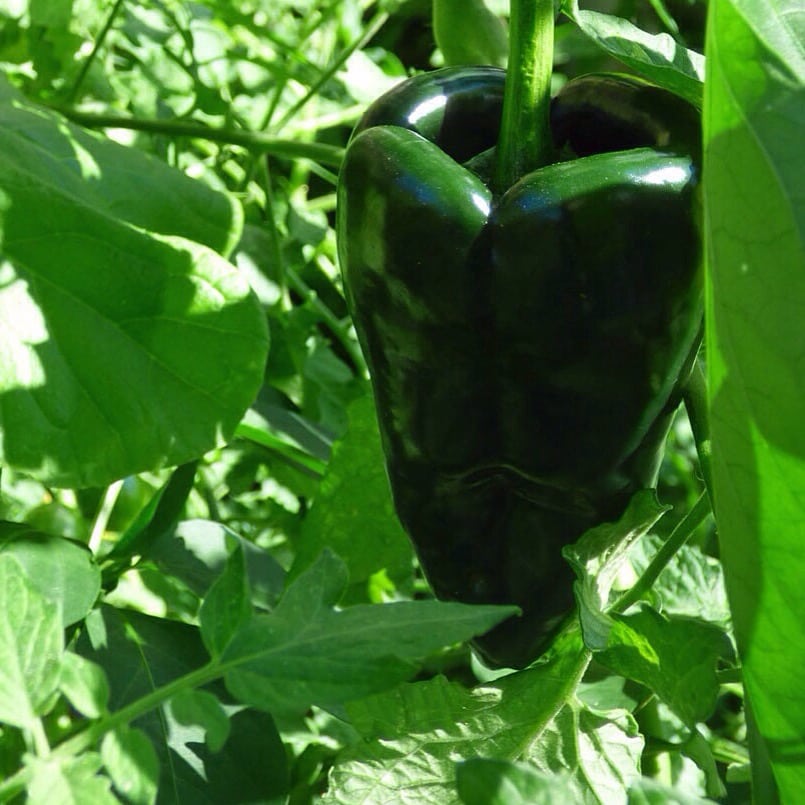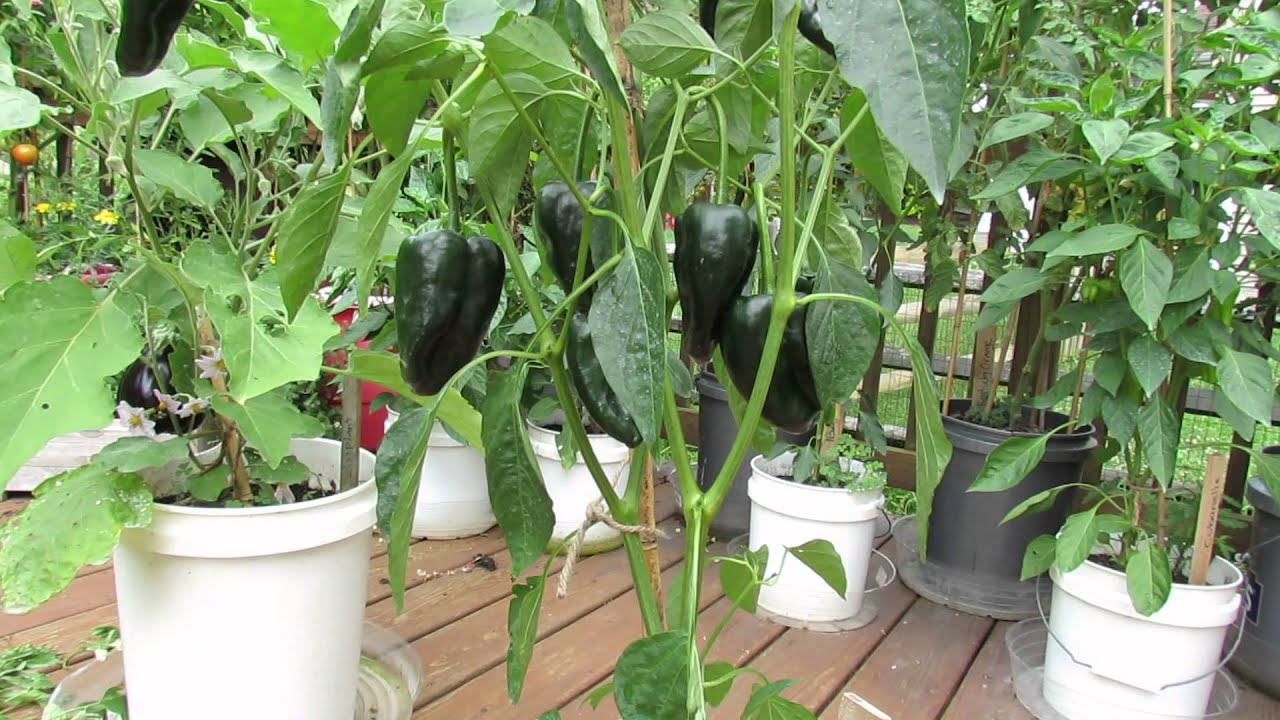To care for Poblano peppers, provide them with well-draining soil, regular watering, and full sunlight. Poblano peppers thrive in warm climates with temperatures around 70-85°F (21-29°C).

Credit: www.gardeningknowhow.com
Choosing The Ideal Growing Conditions
Choosing the ideal growing conditions for your Poblano peppers is crucial for their successful development. Providing adequate sunlight ensures the optimal growth of your peppers. These peppers thrive in full sun, requiring at least 6-8 hours of direct sunlight daily.
To ensure optimal temperature and humidity levels, it is recommended to keep the temperature between 70-85°F (21-29°C) during the day and a slightly cooler temperature at night. Additionally, maintaining a humidity level of around 40-60% helps promote healthy growth.
Another important aspect is selecting the right soil and ensuring proper drainage. Poblano peppers prefer loamy soil that is well-draining and fertile. A pH level between 6 and 7 is considered ideal. An ideal soil mixture can be achieved by combining garden soil, compost, and sand in equal proportions. This composition allows for proper drainage and nutrient retention, essential for the peppers’ overall health.
How to Care for Poblano Peppers : Step by Step Guide
Planting Poblano Pepper Seeds
Germinating pepper seeds indoors is the first step in successfully growing and caring for Poblano peppers. Start by filling seed trays with moistened potting soil and gently pressing the seeds about ¼ inch deep into the soil. Keep the trays in a warm area, ideally around 80°F, and cover them with plastic wrap to create a greenhouse effect. Within 10-14 days, the seeds should start to germinate.
Once the seedlings have sprouted, remove the plastic wrap and provide them with sufficient light. A south-facing window or artificial grow lights will work best. Ensure that the seedlings receive at least 6-8 hours of bright light daily to ensure healthy growth.
Preparing the Seedlings for Transplantation
Before transplanting the Poblano pepper seedlings outdoors, gradually expose them to outdoor conditions. Start by placing them outside for a few hours a day, gradually increasing the time over a span of 7-10 days. This process, called hardening off, helps the plants acclimate to varying temperatures, wind, and sunlight.
Transplanting Poblano Pepper Seedlings Outdoors
When the seedlings have been sufficiently hardened off, choose a sunny area in your garden with well-draining soil. Dig holes large enough to accommodate the root ball of each seedling and gently place them in the holes, ensuring they are planted at the same depth as they were in the seed trays. Backfill the holes with soil, firming gently around the base of each plant. Water the newly transplanted Poblano pepper seedlings thoroughly.
By following these steps, you can ensure a successful start to growing and caring for Poblano peppers.
Essential Care Guidelines For Poblano Pepper Plants
Proper care is essential for the healthy growth of Poblano pepper plants. **Watering** is crucial and should be done regularly but avoid over-watering as it can lead to root rot. **Fertilizing** the plants with a balanced fertilizer high in nitrogen will help promote vigorous growth and abundant fruit production.
Regular **pruning** is necessary to maintain the shape of the plant and increase air circulation, reducing the risk of diseases. When pruning, always use clean and sharp pruners to avoid damaging the plant. **Supporting** the plants with stakes or cages will prevent them from falling over when heavily laden with peppers.
**Mulching** around the plant can help conserve moisture and suppress weed growth. Lastly, it’s important to **monitor** for pests and diseases and take necessary measures to control them. By following these care guidelines, you can enjoy a bountiful harvest of delicious Poblano peppers.
Identifying And Treating Poblano Pepper Diseases
Identifying and treating common diseases that affect Poblano peppers is crucial for maintaining a healthy crop. Some of the most frequently encountered pepper diseases include:
| Disease | Symptoms | Treatment |
|---|---|---|
| Anthracnose | Brown lesions on fruits and leaves | Apply copper-based fungicide |
| Bacterial spot | Dark, water-soaked spots on leaves and fruits | Remove infected plants and rotate crops |
| Root rot | Yellowing, wilting, and stunted growth | Improve drainage and avoid overwatering |
When it comes to treating these diseases organically, there are several effective solutions to consider. Neem oil, which has antifungal and antibacterial properties, can be sprayed on plants to control various diseases.
Additionally, applying a mixture of baking soda and water can help prevent and manage fungal infections. Practicing crop rotation and keeping the garden free from debris can also reduce the risk of disease. Regularly inspecting plants for any signs of disease and promptly treating them is essential for the overall health of Poblano pepper plants.
By identifying and addressing pepper diseases, you can ensure the longevity and productivity of your Poblano pepper plants, resulting in a bountiful harvest of flavorful peppers.
Preventing Pests In Poblano Pepper Gardens
Poblano peppers are delicious and versatile, but they can be vulnerable to various pests that can cause damage to your garden. It’s important to take preventive measures to protect your peppers from these common pests. Some of the most common pests that affect poblano peppers include aphids, caterpillars, and spider mites. These pests can eat away at the leaves, stems, and fruits of your plants, leading to decreased yield and overall plant health.
Fortunately, there are natural pest control methods that you can employ to keep these pests at bay. For instance, you can introduce beneficial insects like ladybugs and lacewings that feed on aphids and caterpillars. Additionally, you can use organic insecticidal soaps or neem oil sprays to control pests like spider mites. Regularly inspecting your plants and removing any pests you find can also help prevent infestations. By following these natural pest control methods, you can ensure the health and productivity of your poblano pepper garden.
Determining The Right Time To Harvest Poblano Peppers
Harvesting poblano peppers at the right time is essential to ensure optimal flavor and texture. Several factors can indicate when it’s time to harvest your peppers:
| Indicating Factors for Pepper Ripeness |
|---|
| 1. Color: Poblano peppers turn from green to red as they mature. Pick them when they reach a vibrant red color. |
| 2. Firmness: Gently squeeze the peppers. Ripe poblanos should have a firm and plump texture. |
| 3. Size: Poblano peppers grow to an average of 4-5 inches in length. Harvest them when they reach this size. |
To harvest your poblano peppers, follow these effective techniques:
- Use garden shears or a sharp knife to cut the peppers from the plant, leaving a short stem attached.
- Handle the peppers with care to avoid bruising or damaging their delicate skin.
- Harvest peppers individually as they ripen, rather than waiting to pick the entire crop at once.
By following these guidelines, you can enjoy fresh and flavorful poblano peppers straight from your garden.
Storing And Preserving Poblano Peppers
Properly storing and preserving fresh poblano peppers is essential to maintain their flavor and quality for an extended period. To store poblano peppers, start by washing them thoroughly and allowing them to dry completely. Next, place the peppers in a plastic bag or airtight container and store them in the refrigerator. This will help to keep them fresh for up to a week.
If you have an abundance of poblano peppers and want to preserve them for a longer duration, there are creative preservation methods you can try. One method is to pickle the peppers by soaking them in a mixture of vinegar, salt, and spices. This will not only lengthen their shelf life but also add a tangy flavor to the peppers.
Another option is to roast the poblano peppers and freeze them. After roasting, remove the charred skin, seeds, and stems. Then, label and store the peppers in freezer-safe bags or containers. This will allow you to enjoy the smoky flavor of roasted poblanos even when they are out of season.
| Preservation Method | Description |
|---|---|
| Pickling | Soak poblanos in vinegar, salt, and spices for a tangy flavor. |
| Freezing | Roast poblanos, remove skin and seeds, then freeze for later use. |
Delicious Recipes Using Poblano Peppers
Poblano peppers are a versatile ingredient that adds a delicious kick to any dish. One way to enjoy their spicy flavor is by making a Spicy Poblano Pepper Salsa. This salsa is perfect for dipping tortilla chips or adding to tacos and burritos.
Another tasty option is Roasted Stuffed Poblano Peppers. Stuff these peppers with a mixture of cheese, rice, and ground beef, then bake them until tender and golden. The combination of the roasted poblanos and the savory filling creates a mouthwatering dish.
If you’re in the mood for something with a touch of heat and savory goodness, try Poblano Pepper and Chicken Enchiladas. These enchiladas are filled with shredded chicken, poblanos, and cheese, then smothered in a zesty sauce. They are easy to make and perfect for a weeknight dinner.
Frequently Asked Questions Of How To Care For Poblano Peppers
Do Poblano Peppers Come Back Every Year?
Yes, poblano peppers do come back every year in the garden.
How Do I Know When My Poblano Peppers Are Ready To Pick?
Poblano peppers are ready to pick when they are dark green, firm, and about 4 to 6 inches long.
Do Poblano Peppers Need Full Sun?
Poblano peppers thrive in full sun for optimal growth.
Do Poblano Peppers Need A Trellis?
No, poblano peppers do not need a trellis. They can grow and support themselves without additional support structures.
Conclusion
Taking care of poblano peppers is essential for a successful harvest and flavorful dishes. By following these tips, you can ensure the health and productivity of your plants. Start by selecting healthy seedlings and providing them with the right growing conditions, including adequate sunlight, water, and well-draining soil.
Regularly check for pests and diseases, promptly addressing any issues that arise. Support the plants with stakes or cages as they grow taller, preventing breakage. Harvest the peppers when they reach their desired size and color, using a sharp knife or pruning shears.
And finally, incorporate these versatile peppers into your favorite recipes to savor their unique smoky flavor. With proper care and attention, your poblano pepper plants will thrive, allowing you to enjoy the bountiful rewards of your efforts in the kitchen.

